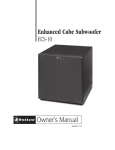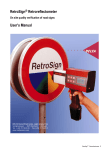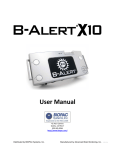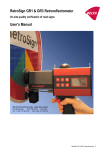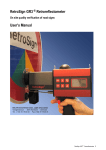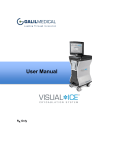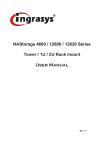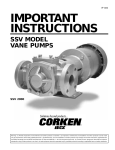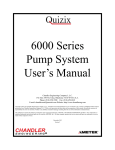Download Service Manual - Eagle Pump and Compressor
Transcript
E AGL E Installation, Operation and Maintenance Instructions EAGLE MODEL S300 & S310 SUMP PUMPS Revised: 10/2003 -1- TABLE OF CONTENTS INTRODUCTION ...……………………………………………………. 1 …………………………………………………………… …………………………………………………………… …………………………………………………………… …………………………………………………………… …………………………………………………………… 1 1 2 2 2 …………………………………………………………… …………………………………………………………… …………………………………………………………… …………………………………………………………… …………………………………………………………… …………………………………………………………… …………………………………………………………… …………………………………………………………… …………………………………………………………… 2 2 2 3 3 3 3 4 4 …………………………………………………………… …………………………………………………………… …………………………………………………………… …………………………………………………………… …………………………………………………………… …………………………………………………………… …………………………………………………………… …………………………………………………………… …………………………………………………………… 4 4 4 4 4 5 5 5 5 …………………………………………………………… …………………………………………………………… …………………………………………………………… …………………………………………………………… 6 7 8 8 …………………………………………………………… …………………………………………………………… …………………………………………………………… …………………………………………………………… …………………………………………………………… …………………………………………………………… 9 9 9 10 11 13 …………………………………………………………… 15 …………………………………………………………… …………………………………………………………… …………………………………………………………… 16 16 17 SECTION 1 - Safety Regulations Safety Regulations Importance of Instructions Receiving Inspection -Shortages Preservation & Storage Handling Techniques SECTION 2 –Installation Preparation for Installation Installation of Unit in Pit Stuffing Boxes Installation of Motor Impeller Adjustments Rotation Check Connection of Flexible Coupling Piping Level Controls SECTION 3 - Operation Bearings Motor Bearing & Coupling Priming Flush Flows Check for Free Turning Operating at Reduced Flows Operating at Reduced Heads Operating with Surge Conditions Freezing Conditions SECTION 4 – Product Information Sectional View Parts List & Materials of Construction Sectional View of Model S310 Parts List and Materials of Construction SECTION 5 – Care & Maintenance Lubrication Adjusting Impeller Clearance Disassembly Procedures Inspections & Overhauls Reassembly Procedures Rotary Vapour Seal SECTION 6 – Trouble Shooting Trouble Shooting SECTION 7 – Spare Parts Spare Parts Instructions for Ordering Spare Parts Eagle Warranty INTRODUCTION This instruction manual is intended to assist those involved with the installation, operation, and maintenance of Eagle Model S300 Series Pumps. It is recommended that this manual be thoroughly reviewed prior to installing or performing any work on the pump or motor. ! ! WARNING Read this manual and follow the safety directions before installing or operating this unit. WARNING Eagle Pump & Compressor Ltd. will not be liable for any damages or delay caused by failure to comply with the provisions of this instruction manual. This pump is not to be operated at speeds, working pressures, discharge pressures or temperatures higher than, nor used with liquids other than originally intended for, without written permission from Eagle Pump & Compressor Ltd. SECTION 1 - SAFETY REGULATIONS 1.0 Safety Regulations 1.1 In addition to the general technical regulations of the local authorities, the following guidelines must be strictly observed: The design, material and workmanship incorporated in the construction of Eagle pumps makes them capable of giving long, trouble-free service. The life and satisfactory service of any mechanical unit, however; is enhanced and extended by periodic inspection and careful maintenance. This instruction manual was prepared to assist operators in understanding the construction and correct methods of installing, operating and maintaining these pumps. Failure to observe these notices could result in severe personal injury, death, property damage and/or pump damage. ♦ Importance of Instructions Study thoroughly Sections 1, 2 & 3 and carefully follow the instructions for installation and operation. Sections 4, 5, 6 & 7 are answers to trouble and maintenance questions. Keep this instruction manual handy for reference. The pump should only be operated within the rated conditions of the pump. Do not operate the pump at other than intended speeds, working pressures, discharge pressures, temperatures and oil levels without written permission from Eagle Pump & Compressor Ltd. -1- 1.2 Receiving Inspection – Shortages Care should be taken when unloading pumps. If the shipment is not delivered in good order and in accordance with the Bill-of-Lading, note the damage or shortage on both the receipt and freight bill. MAKE ANY CLAIMS TO THE TRANSPORATION COMPANY PROMPTLY. The driver, coupling, and seal manufacturers should be contacted for their recommendations on preservations and protection procedures. Instruction sheets on various components as well as the Instruction Book and “Shipped Loose” for the pump are included in the shipment. DO NOT DISCARD! . 1.3 Preservation and Storage Eagle’s normal domestic storage preparation is suitable for protecting the pump during shipment in covered trucks. It also provides protection . 2.0 Location Preparation for Installation Vertical units are shipped completely assembled, except level controls, coupling inserts and suction screen (S300-A only). Check all bolts and nuts on entire unit to make sure they are securely tightened. Install level controls and suction screen per manufacturer’s recommendations. 2.1 ♦ ♦ 1.4 Handling Techniques Care should be used in moving pumps. Pumps should not be hoisted by the motor eyebolts, or discharge pipe. Eyebolts, if installed, are intended for removing the electric motor. Discharge piping cannot support the full or partial weight of the pump and may break. An assembled pump should be hoisted using a sling through the lifting lugs provided. SECTION 2 - INSTALLATION Pump unit should be placed as close as practical to the source of supply. Floor space and headroom allotted to the unit must be sufficient for inspection and maintenance. Be sure to allow for crane or hoist service. 2.0 during covered storage at the jobsite, and for the short period between installation and start-up. If the pump is to be idle and exposed to the elements for an extended period, either before or after installation, special precautions are required. One approach is to provide special preservatives and wrapping before shipment. However, after installation, the protective wrappings will have been removed. Therefore, application of preservatives after installation is considered a good practice. Installation of Unit in Pit Installation must be done with care to avoid damage and to ensure proper operation. Check clearance between the unit and pit. There must be at least ½” clearance between the sides of the pumping unit and any portion of the pit. -2- ♦ There should be 4 to 6” from the bottom of the pump to the bottom of the pit. ♦ Lower assembled pump carefully into pit. Guide unit carefully so that it does not strike the sides of the pit. ♦ When the coverplate is supported on the pit, level the coverplate. Shim under coverplate when necessary to level the unit. Pump must hang straight down to avoid placing a bending stress on the unit. Bolt coverplate to the supports on the pit. 2.2 Stuffing Boxes An upper stuffing box is available as an option when it is desirable to seal vapors, fumes, etc., in the sump or tank. A) Packing – Upper Stuffing Box Packing rings are supplied and special care must be used during installation. To pack the stuffing box, install the packing and lantern ring in the proper sequences, 3 rings, lantern ring, 2 rings, and gland. Firmly seat each ring. Stagger joint in each 90°. Make sure center of lantern ring lines up flush, tap in the stuffing box. Since the upper stuffing box seals vapors only, there is no leakage at the gland. Standard lubrication is by a grease fitting. Approximately 5 shots per 100 hours is adequate. Sealing liquid may be supplied through a line from the discharge pipe if the pump fluid is clean. If it is abrasive, an outside source of clean liquid should be used. After the packing has been completely run in, at least 40 to 60 drops per minute should be allowed to trickle from the stuffing box at all times with a clean liquid flush. FIGURE 1. B) Mechanical Seals When the mechanical seals are furnished, they are installed and adjusted at the factory. To properly prepare the seal for operation, lubrication or flush lines must be connected. Standard lubrication is an oil reservoir – gravity fed directly to the seal face. Seal flush is also provided and is shipped completely assembled. Separate seal manufacturer’s installation drawings are attached to the pump and should be filed for future use in maintaining the seal and in adjusting the seal when the pump is disassembled. C) Rotary Vapour Seal If your pump is equipped with a Rotary Vapour Seal, the constant level oil must be installed and the resevoir must be filled with oil. Refer to Section 5.5 “Rotary Vapour Seal – Step #7” 2.3 Installation of Motor – Fig. 1.0 2.4 Impeller Adjustment Impeller clearance is adjusted at the factory, but should always be re-adjusted prior to pump operation. Clearance between impeller and the casing should be checked using the procedure in Section 5.1, Adjusting Impeller Clearance. 2.5 Rotation Check Before the coupling is connected, the motor should be wired and the direction of rotation checked. A rotation arrow is located on the motor support. Serious damage can result if the pump is run in the wrong direction. Standard rotation for the S300/S310 Series Pump is CW as viewed from the driver. Once the motor rotation is checked, connect the coupling, following the manufacturer’s instructions. If a coupling guard is furnished with the unit, ensure that it is securely fastened in place. 2.6 Connection of Flexible Coupling If the motor is shipped from Eagle’s shop, both the coupling halves will be assembled on shafts in their correct positions. If the motor is shipped separately or furnished by the customer, the motor coupling half must be fitted on the motor shaft prior to installing the motor. Connect coupling; follow the instructions in the provided box for the particular make of coupling used. This data is supplied separately, giving complete instructions for the connection, lubrication, alignment and maintenance. Place motor on motor support (240) and tighten bolts snugly. Pump should never be operated without the coupling guard correctly installed. -3- 2.7 B) Metallic Bearings Piping Guidelines for piping are given in the “Hydraulic Institute Standards” and should be reviewed prior to pump installation. All piping should be supported independently of, and line up naturally with, the pump flanges. Both cast iron and bronze steady bearings are available and must be grease lubricated. Lack of lubrication can lead to galling and eventual seizing. It becomes extremely difficult to keep enough grease in the housing when handling hot liquids, caustic solutions or solvents. NEVER DRAW PIPING INTO PLACE BY USE OF FORCE AT THE FLANGED CONNECTIONS OF THE PUMP. Discharge piping should be short and as direct as possible to minimize friction losses. Foundation, pump and driver hold-down bolts should be tightened prior to connecting discharge piping to the pump. 2.8 Unless an adequate maintenance program exists, it is recommended that a selflubricating bearing such as a carbon be used in place of the metallic bearing. C) Lubrication The type of grease to be used is Shell Alvania E.P.I. Lowtherm or equal. Level Controls Consult the manufacturer’s recommendation regarding the installation, maintenance and operation of float switches and/or level controls. ! WARNING Improper installation and/or operation could cause the pump to run dry, resulting in serious damage to your pump. SECTION 3 - OPERATION 3.0 Bearings 3.1 Motor Bearing and Coupling Thrust Bearing Ball bearings are standard on all S300 Series Pumps and are lubricated at the factory. Do not grease at too frequent intervals. Approximately 10 shots every 100 hours is adequate. The type of grease to be used is Shell Alvania E.P.I. or equal. Steady Bearings A) Carbon Bearings These bearings are chemically inert in most liquids and can be used in liquids up to the temperature limits of the pump. The carbon bearing is sealed within the housing by two lip seals and filled with grease by a pressure lubricator located above the support plate. The pressure cup must be kept full of grease. -4- Check to be sure the motor bearings and coupling are properly lubricated. Refer to the manufacturers recommendations. 3.2 Priming Before starting up the pump, check the impeller centerline submergence. The pump must be full of liquid with specified submergence head above the centerline of the impeller. DO NOT run the pump dry, as this might damage the pump parts or steady bearings. 3.3 Flush Flows Before the pump is started, the flushing flow should be started (when furnished). 3.4 Check for Free Turning Before the pump is started, rotate the pump by hand to make sure it turns freely, and does not rub or bind. Packing and/or mechanical seal, if supplied, could interfere with free turning. 3.5 Operating at Reduced Flows 3.8 A centrifugal pump should never be operated continuously near shut-off or zero capacity, or with the discharge valve closed. To do so may shorten the life of the pump and greatly increase down time and maintenance. Operation with the discharge valve closed will cause a temperature increase in the liquid within the casing. If this condition exists over a long period, the temperature of the liquid may increase until the boiling point is reached. If this occurs, the rotating parts are exposed to vapor and may score or seize to stationary parts. Hydraulic radial thrust is unbalanced when the pump is operating near shut-off and this subjects the shaft to abnormal deflection and accelerated lower steady bearing wear. The pump will be noisy, will vibrate excessively and may result in shaft breakage. A simple method of relieving the pump of undue strain is to extend a by-pass line from the pump discharge line back to the sump or tank. A throttle valve or an orifice plate should be placed by the bypass line and sufficient flow returned to allow the pump to operate at a capacity reasonably near its rating. The by-passed liquid should always be returned to the source of supply and discharged below the liquid level to avoid air entrapment. 3.6 Operating at Reduced Heads When the discharge head or pressure is dropped considerably below the rated point for any length of time, the motor should be watched for overloading. If this condition is likely to persist, arrangements should be made either to manually or automatically throttle the discharge valve to build up head to a safe point. 3.7 Operating with Surge Conditions If the pump is installed with a quick closing valve in the discharge line that closed when the pump is running, dangerous pressure surges may be built up that can cause damage to the pump or line. In services of this kind, some cushioning arrangement must be provided to protect the pumping equipment. -5- Freezing Conditions When exposed to freezing conditions and the pump is standing idle, special precautions should be taken to prevent freezing and pump damage. Flush lines should also be properly protected form freezing. SECTION 4 – PRODUCT DESCRIPTION Figure 4.A. SECTIONAL VIEW -6- PARTS LIST AND MATERIALS OF CONSTRUCTION Item No. 100 101 102 105 106 107 111 112 113 122 134 136 178 182 187 189 190 191 192 193 194 195 197 198 199 213 221 240 306 315 332 333 334 351 361 370-A 370-B 370-C No. Req’d Per Pump 1 1 1 1 1 Set 1 1 1 1 1 1 1 1 1 1 1 ▲ ▲ 1 1 ▲ 1 ▲ 1 1 ▲ 1 1 ▲ 1 1 1 ▲ 1 1 6 4 3 370-D 370-E 370-G 371-H 370-J 371 3 ▲ 6 6 4 1 Standard Material of Construction 1 Part Name Casing ● Impeller ● Adapter Plate – Column to Casing Upper Stuffing Box Lantern Ring* Upper Stuffing Box Packing* Upper Stuffing Box Gland* Bearing Housing Cover Ball Bearing Dust Cover Pump Shaft Bearing Housing Retainer Nut – Ball Bearing Impeller Key ● Suction Cover ● Strainer ● Mounting Plate Lubrication or Flush Line* Flush Line Elbow* Head Column Grease Fitting – To Bearing Housing Grease Fitting – To Intermediate Bearings Discharge Pipe Steady Bearing Impeller Screw ● Impeller Washer ● Intermediate Bearing Housing Stuffing Box* Motor Support Column Extension Discharge Elbow Grease Seal – Bearing Cover Grease Seal – Motor Stand Grease Seal – Intermediate Bearing Gasket – Suction Cover to Casing ● Retainer Washer – Ball Bearing Capscrew Column to Motor Stand Capscrew Motor Stand to Support Plate Capscrew – Bearing Housing Cover to Bearing Housing Capscrew – Adjustable Capscrew with Nut-Column to Intermediate Bearing Capscrew with Nut-Column Pipe to Casing ● Capscrew – Strainer to Casing ● Capscrew with Nut – Discharge Elbow to Casing ● Gasket – Stuffing Box to Mounting Plate* 316SS Fitted All Iron All 316SS C.I. C.I. C.I. 316 C.I. 316 – Teflon Teflon C.I. or as Specified C.I. Steel C.I. Steel C.I. Steel 316 C.I. C.I. Steel or as Specified Steel Steel Steel Steel Steel Steel Carbon ■ Alloy Plated Steel 416 C.I> C.I. or as Specified C.I. Steel Steel Nitrile Nitrile Nitrile/Viton/Aflas Non Asbestos Steel Steel Steel 416 316 316 316 316 304 316 316 316 316 316 316 316 Steel Steel Steel Steel Steel Steel Neoprene ● Please refer to Figure 4-B for S310 pumps. ▲ ■ * Quantity dependent on pit depth. Also available in Teflon, bronze and iron. Use 316 or alloy shaft with rubber or viton bearings. Optional equipment. -7- 316 316 316 316 316 316 316 SECTIONAL VIEW OF MODEL S310 PUMP PARTS Figure 4.B. PARTS LIST AND MATERIALS OF CONSTRUCTION No. Req’d per Pump CPL 1 AD-10 1 20 1 21 2 22 1 23 1 24 1 25 2 26 1 27 1 30 6 31 2 32 8 33 1 34 1 35 1 Item No. Part Name Coupler Adapter Plate Casing Pipe Plug Rotor and Shaft Idler Idler Bushing Head Gasket Idler Pin Head Cap Screw for Head Relief Valve Gasket Cap Screw for Valve Internal Relief Valve Suction Elbow Suction Filter Material Available Steel Steel Iron S.S. S.S. Steel Steel Iron/Steel Steel/Steel Iron Steel Carbon Graphite Standard Hard Steel Iron Steel Steel Standard Steel Iron Steel Steel Iron -8- SECTION 5 – CARE & MAINTENANCE 5.0 e) Make sure jam nuts on bolts (D) are loose. Tighten bolts (D) evenly until bearing shell is tight against bolts (C). Make sure all bolts are tight. Tighten jam nuts. Lubrication 1) Thrust Bearing. See Section 3 – Bearings 2) Steady Bearing. See Section 3 – Bearings. 3) Motor Bearing and Coupling. Follow manufacturer’s recommendation 5.1 f) Adjusting Impeller Clearance If a gradual loss in head and/or capacity occurs, performance can be restored by adjusting the impeller. It is also recommended that the impeller clearance be set at installation prior to start up. To adjust the impeller clearance: a) Disconnect Coupling b) Loosen adjustment bolts and jam nuts (D) in Figure 2. c) Tighten shell bolts (C) in Figure 2., while rotating the shaft until the impeller lightly contacts the suction cover. Connect coupling. With the above method, the rotating element and impeller have been moved the desired distance away from the suction cover, thus giving the required clearance between these two parts. Rotate shaft several times to check for free turning. 5.2 Disassembly Procedures TO PREPARE FOR DISASSEMBLY PROCEED AS FOLLOWS: a) Never use heat to disassemble the pump; this could cause an explosion by any trapped liquid. b) Lock out power supply to motor. c) Shut off valves controlling the flow from the pump. d) Disconnect coupling. e) Disconnect motor and remove the motor from the support. f) Disconnect the discharge discharge flange. pipe at the g) Dismantle the flow controls (when furnished). h) Remove the bolts holding mounting plate to support and lift the pump from the sump and lay horizontally on the proper supports. i) FIGURE 2. d) Loosen bolts (C) until the following clearances are reached between the underside of the bolt head and the bearing shell. - S300 pumps – 0.015” plus 0.004” per intermediate bearing and packing. - S310 pumps – 0.005” plus 0.004” per intermediate bearing and packing. -9- Remove the stuffing box gland if any corrosive and/or toxic fluids are pumped. USE EXTREME CAUTION! The numbers located on Figure 3, refer to the procedure steps. e.g.: Number 1. Refers to Step 1. FIGURE 4. 8) Remove bearing shell bolts and slide the bearing shell assembly from the bearing housing. (See Figure 4.) FIGURE 3. 1) Remove strainer and suction cover. 9) Remove adjustment bolts and jam nuts. 2) Disconnect discharge pipe from casing. 3) Disconnect any steady bearing flush tubing. 10) Remove end cover/slip seal from the bearing shell. A screwdriver can be used to pry the seal from the housing. 4) Remove the impeller screw (4A) and washer (4B) and pull the impeller (4C) and key off of the shaft. 11) Slide the bearing shell off the bearing and shaft. 5) Remove the column to casing bolts (5A) and pull the casing (5B) from the column. 12) Remove the bearing locknut and washer. Pull the bearing off the shaft with a puller. 6) Remove the column to steady bearing housing bolts and slide the column pipe off of the shaft. On longer units, there is one or more column pipes and steady baring housings. 13) The motor support, bearing housing and upper stuffing box (if provided) need not be removed unless they are to be replaced. If the pump has an upper stuffing box the packing and the lantern ring should be replaced. Starting at the casing end of the pump, remove the column pipes and steady bearing housings one at a time. While removing columns, support the shaft to prevent bending and possible damage to the bearings. 14) Steady bearings and casing bushing should not be removed unless they are to be replaced. 5.3 Inspections and Overhaul Impeller HINT: Match mark each column pipe-bearing housing joint to enable correct position of these parts during reassembly. Replace if impeller shows excessive erosion, corrosion and extreme wear or vane breakage. Check the impeller balance. Shaft Check shaft to see that it is straight. Baring areas (ball and steady bearings) must be smooth and in good condition. Replace if necessary. 7) Remove pump half coupling hub and key. -10- Ball Bearing Replace if worn, loose or rough and noisy when rotated. New bearings should not be unwrapped until ready for use. Replacement bearings must be the proper size and type as specified. Refer to Section 4, Materials of Construction. Steady Bearings Check bearing bore for excessive wear and roughness. Replace worn or damaged bearings. a) Press bearings from housing using a suitable tool. Clean housing thoroughly. b) Apply a light coating of oil to the bore of the bearing housing and the O.D. of bearings. c) Carefully press the new bearing into the housing. It is not necessary to align the bearing lube holes with the housing lube hole. For sealed bearing housings: Repeat steps (a) through to (c) above. d) Press a new lip seal into the bearing housing. Care should be taken to keep the seal “Square” as it is pressed. e) Press the new bearing down to the lip seal. Press the second lip seal down to the bearing. All steady bearings within the same group have the same outside dimension. Any bearing material, metallic, graphite, fluted, etc., can be inter-changed within that housing without any modification (includes sealed bearings). Grease Seals Replace if torn or otherwise damaged. The seals are held by a press fit. Lips on seals should face outward (away from the bearings). 5.4 2) Place bearing lock washer and locknut on the shaft and tighten firmly. Bent tang on the lock washer into the groove in the locknut. A spanner wrench should be used to tighten the locknut. 3) Install the lip seal (#333) into the motor stand and then install the bearing housing (#134) into the recess on the motor stand. To replace steady bearings: f) 1) Press the ball bearing onto the shaft as far as possible by hand. Heating the bearing will facilitate assembly. Start the bearing square on the shaft and use a driving sleeve on the inner race to firmly seat the bearing. Reassembly Procedure This section covers reassembly of the pump after complete disassembly. Make sure all directions in Section 5.3, Inspection and Overhaul, have been followed. -11- 4) Slide the bearing end cover over the shaft and seat in the shell, replace adjustment bolts. Tighten jam nuts finger tight. 5) With the top plate in the vertical position, bolt the head column pipe into position and install the shaft/ball bearing assembly. Do not damage the bearing grease seal. Replace the bearing shell to housing bolts. Supports should be provided to support both the column pipe and the shaft. 6) Slide a steady bearing housing (when furnished) against the column pipe flange. If flush tubing is used, make sure drilled flush opening in bring housing flange matches the location of holes in the support plate. 7) Install additional column pipes and bearing housings, if any. 8) Install and bolt the casing to the column. Make sure discharge nozzle aligns with the discharge pipe hole in the support plate. 9) Add a film of oil to the shaft and place the impeller and key, (or screw impeller) on the shaft for S300 pumps. For S310 pumps, screw the rotor shaft into the shaft coupling. 10) Place the suction cover and strainer (S300), or head (S310), with the gasket against the casing and the bolt in place. If the unit is furnished with a ball type float control, the lower float rod guide arm is fastened to the casing with an extra long bolt. 11) For S300 pumps, check the axial travel of the impeller within the casing by using the procedure in Section 5.1, Care & Maintenance ~ Adjusting Impeller Clearance. 12) Connect discharge elbow and the piping to the casing. 14) Connect all auxiliary piping. 16) If the unit has packed upper stuffing box, repack the box with new packing and lantern ring. Refer to Section 2, Stuffing Boxes. 15) Lubricate the pump bearings as described in Section 3.0, Bearings. 17) Follow the directions in Sections 1, 2 & 3 for installation and operation instructions. 13) Replace the pump half coupling hub. Pay particular attention to the instructions concerning the rotation and impeller adjustment. -12- SECTION 5.5 - ROTARY VAPOUR SEAL Your Eagle S300 or S310 Sump Pump may be equipped with an Eagle Rotary Vapour Seal. The following installation guide is applicable to all types of Eagle S300 & S310 Sump Pumps. It is our experience that following this guideline will prolong your equipment life. PARTS BREAKDOWN & DIAGRAM 1 2 3 4 5 6 7 8 9 S300 Rotary Vapour Seal Gland Lip Seal Magtecta Double Seal Gland Gasket 1/4” x 6” Long NPT Nipple A100 Constant Level Oiler (Base) Oil Level Spacer Constant Level Oiler (Cap) Lip Seal Breather Hole 8 9 -13- COMMISSIONING & START-UP INSTRUCTIONS • Do not disassemble any portion of the mechanical seal unit, as this will void any warranty. The Eagle Rotary Vapour Seal has been assembled and installed at the Eagle manufacturing facility however; the Constant Oil Leveller (6, 7, 8) is NOT installed and shipped loose with the pump unit. The Oiler must be installed before pump operation can commence. The Oiler provides a liquid barrier and cooling for the mechanical seal. Refer to section 7 in the installation instructions below. INSTALLATION INSTRUCTIONS The following instructions are intended to help in the installation/ replacement of existing Rotary seals. NOTES: • Eagle Rotary Vapour seals are a one-piece cartridge design. • Do not disassemble any portion of the unit, as this will void any warranty. • Do not use grease for the shaft or O-ring housing (stuffing box bore). The O-rings provide seal face anti-rotation and/ or drive. 1. Ensure there are no sharp edges over which the seal O-ring must pass. Break all sharp edges. Pay special attention to keyways, shaft steps and housing bore edges. 2. Clean and degrease the shaft and stuffing box bore. 3. For replacements, ensure any old gasket material on stuffing box face. 4. Install a new gland gasket (4) onto the stuffing box face. 5. Slide the seal assembly onto shaft, ensuring the following a. The lip seal facing away from the stuffing box. b. ¼” seal gland port is facing towards window opening in stuffing box casting. c. Assembly should locate easily onto stuffing box. 6. Insert and tighten Gland bolts. 7. Install the seal fluid barrier components (5, 6, 7) a. Install ¼” x 6” nipple (5) into seal gland port and secure tightly. b. Install Oiler base to end of ¼” nipple. Oiler opening should face upwards. c. Install Oiler Spacer by sliding the spacer over the Oiler opening and allowing it to rest on the base. The spacer is provided to ensure the proper oil level for the Vapour Seal. d. Add oil to the Oiler Base (6) until a small amount of oil appears in the Lip Seal Breather Hole (9). e. While holding the Oiler Cap (8) in one hand, fill the cap approx. 3/4 full of oil, then quickly insert the cap and place into position on the Oiler Base (6). Recommended oil: SAE 10 Lubricant (Approximately 180 SSU viscosity @ 100 Deg F) -14- SECTION 6 – TROUBLESHOOTING SYMPTOM No Liquid Delivered Not Enough Liquid Delivered Not Enough Pressure Pump Works for a While Then Quits Pump Takes Too Much Power Pump is Noisy POSSIBLE CAUSE Priming – casing and suction pipe not completely filled with liquid or no liquid in the pit. Speed too low Discharge head too high. Impeller, suction pipe or strainer completely plugged. Wrong direction of rotation Air pocket in the suction line (if tailpipe is supplied) Not enough suction head for hot or volatile liquids CHECK CAREFULLY AS THIS IS A FREQUENT CAUSE OF TROUBLE ON SUCH SERVICE Priming – no liquid in the pit Speed too low. Discharge head higher than anticipated Impeller, suction pipe or strainer partially plugged Wrong direction of rotation Not enough suction head for hot or volatile liquids CHECK CAREFULLY AS THIS IS A FREQUENT CAUSE OF TROUBLE ON SUCH SERVICE Mechanical Defects: Impeller clearance too great. Impeller damage. Speed too low Air or gases in liquid Impeller diameter may be too small Mechanical Defects: Impeller clearance too great. Impeller damage. Wrong direction of rotation Pressure gauge on wrong place on discharge nozzle or discharge pipe Impeller not properly adjusted Float Control needs adjustment Not enough suction head for hot or volatile liquids CHECK CAREFULLY AS THIS IS A FREQUENT CASUE OF TROUBLE ON SUCH SERVICE. Air or gases in liquid Impeller suction pipe or strainer plugged. Speed too high Head lower than rating, pumping too much liquid Liquid heavier than anticipated Mechanical defects: Shaft bent Rotating element binds. Pump and driving unit misaligned. Wrong direction of rotation. Hydraulic noise Mechanical Defects: Shaft bent Rotating parts bind, are loose or broken Bearing sworn out Pump and driving unit misaligned Impeller burring on suction cover or casing When connected to electric motors, check whether motor wiring is correct and receives full voltage. -15- SECTION 7 – SPARE PARTS 7.0 services, it is advisable to have spare parts on hand. Spare Parts The following is a list of recommended group parts To ensure against possible long and costly “downtime” periods, especially on critical . Qty Required # Ball Bearing – Coupling End (112) One (1) 6 Impeller (101) for S300 Pumps One (1) Grease Seal – Bearing Cover (332) One (1) 7 Rotor Shaft (22) for S310 Pumps One (1) One (1) 8 Pump Shaft (122) One (1) 9 Motor Drive Coupling Insert One (1) 10 Mechanical seal (*If pump is supplied with seal) One (1) # PART DESCRIPTION 1 2 Grease Seal – Motor Stand (333) 3 4 Steady Bearing (197) 5 Grease Seal – Internal Bearing (334) 7.1 Qty depends on pump length Qty depends on pump length Instructions for Ordering Spare Parts To assure proper efficient pump orientation, your orders should include: ♦ PART DESCRIPTION Qty Required ♦ Indicate the names, part numbers and materials of the parts required. ♦ Give the quantity of the parts required. ♦ Give the complete billing and shipping instructions. Model number, size of the pump and serial number. This data can be obtained from the nameplate. -16- Eagle Pump & Compressor Ltd. 7025 - 5th Street, SE Calgary, AB T2H 2G2 Phone: 403-253-0100 Fax: 403-253-8884 Eagle Pump & Compressor warrants all the products of its own manufacture against defective materials and workmanship only, as follows: This warranty shall not apply and Eagle shall not be responsible for: a) Improper application of the product; b) Consequential, collateral or special losses or damages; c) In no event shall the total liability exceed the initial cost of the repair; d) Equipment conditions caused by wear due to abnormal conditions of use; e) Deviation from operating instructions, specification or other special terms of sale; f) Travel time, charges related to travel such as mileage, sustenance, etc., and/or overtime; g) Labour charges other than specified and approved by Eagle, loss or damage resulting from improper operation, maintenance or repairs made by person(s) other than Eagle's personnel. Pumps Pumps are warranted for (12) months from date of start-up or (18) months from date of shipment from the factory, whichever occurs first. Other Components With respect to products not manufactured by Eagle, Eagle will, if practical, pass along the warranty of the original manufacturer. Parts Ninety (90) days from date of sale. In no event shall Eagle be liable for any claims, whether arising from breach of contract or warranty claims of negligence or negligent manufacture, in excess of the original repair price. Notice of alleged defect must be given to seller in writing with all identifying details including serial number, model number, type of equipment and date of purchase, within thirty (30) days of the discovery of same during the warranty period. THIS WARRANTY IS THE SOLE SERVICE AND REPAIR WARRANTY OF EAGLE, AND ANY OTHER WARRANTIES, EXPRESSED, IMPLIED IN LAW OR IMPLIED IN FACT, INCLUDING ANY WARRANTIES OF MERCHANTIABILITY AND FITNESS FOR PARTICULAR USE, ARE HEREBY SPECIFICALLY EXCLUDED. Eagle's obligation under this warranty is limited to repairing, or at its option, replacing of any product or part thereof, which proves to be defective, provided such defect, occurred in normal service and not as a result of misuse, abuse, neglect or accident. F.O.B. nearest authorized warranty center. No statement, representation, agreement, or understanding oral or written, made by any agent, distributor, representative, or employee of the company which is not contained in this warranty will be binding upon the company unless made in writing and executed by the company. If requested by Eagle, such product or part thereof must be promptly returned to Eagle, freight prepaid for inspection. -17- E A G LE EAGLE PUMP & COMPRESSOR LTD. 7025 - 5th Street SE, Calgary, AB T2H 2G2 Canada Rotary Screw Compressors Air/Gas Dryers Vertical Sump Pumps Multistage Horizontal Pumps ANSI Centrifugal Pumps www.eagle-pc.com 1-888-831-2777 11/04/2002 Printed in Canada -18-






















